 Last week I wrote about the hormone GLP1 because of its role in reducing hunger and controlling blood sugar. Both of these are vital to carrying out an effective weight loss plan for the new year. So here we are with one foot planted in 2024 ready to take off in this new year. Since weight loss is the most common resolution at New Year’s, I felt that a little more info on the modern basics of weight loss would be well suited for the first newsletter of the year.
Last week I wrote about the hormone GLP1 because of its role in reducing hunger and controlling blood sugar. Both of these are vital to carrying out an effective weight loss plan for the new year. So here we are with one foot planted in 2024 ready to take off in this new year. Since weight loss is the most common resolution at New Year’s, I felt that a little more info on the modern basics of weight loss would be well suited for the first newsletter of the year.
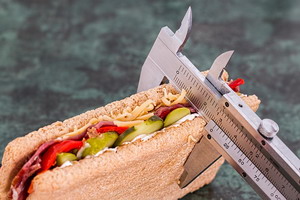 One of the popular sound bites that has been running around for the last few years is that calories don’t count. The old paradigm of simply eating fewer calories than you burn is all you need to know to lose weight has been found far too simplistic. There is a whole world of things that affect our metabolic rate; the rate of calorie burn that determines how many calories we use up each day. One big observation is that if you significantly lower your caloric intake, your metabolic rate will decrease to compensate. While this is true to the tune of about 10%, it will not slow down much more than that. That said, if you don’t eat fewer calories than you burn, you will not lose weight. I have spent years on a keto diet using time-restricted feeding and avoidance of allergens and lectins and not lost an ounce simply because I was still eating too many calories. Healthy calories are still calories, and they still count.
One of the popular sound bites that has been running around for the last few years is that calories don’t count. The old paradigm of simply eating fewer calories than you burn is all you need to know to lose weight has been found far too simplistic. There is a whole world of things that affect our metabolic rate; the rate of calorie burn that determines how many calories we use up each day. One big observation is that if you significantly lower your caloric intake, your metabolic rate will decrease to compensate. While this is true to the tune of about 10%, it will not slow down much more than that. That said, if you don’t eat fewer calories than you burn, you will not lose weight. I have spent years on a keto diet using time-restricted feeding and avoidance of allergens and lectins and not lost an ounce simply because I was still eating too many calories. Healthy calories are still calories, and they still count.
 When we diet, we are trying to lose the excess fat we have stored in fat cells. Right off the bat, we have a problem. Most cells in the body do not burn fat if there is any sugar (glucose) around. They will always burn the glucose first. To even think about burning unwanted fat, we have to use up glucose from the bloodstream. That means two things, eliminating or restricting sugars and starches in the diet and eliminating insulin resistance in the cells that is keeping blood sugar levels high. The cells have to be starved for energy before they will burn fats for energy. (This is not true for heart cells.) What does that mean on a practical level? It means that you are not going to lose weight by eating pasta and drinking fruit smoothies. Both of those become sugar in your gut. If you are going to eat any carbs at all, they need to be complex hard-to-digest carbs like non-starchy veggies and low-carb fruit, like berries. Grains are definitely off the list for any sustained weight loss where you are trying to lose 20 lbs or more.
When we diet, we are trying to lose the excess fat we have stored in fat cells. Right off the bat, we have a problem. Most cells in the body do not burn fat if there is any sugar (glucose) around. They will always burn the glucose first. To even think about burning unwanted fat, we have to use up glucose from the bloodstream. That means two things, eliminating or restricting sugars and starches in the diet and eliminating insulin resistance in the cells that is keeping blood sugar levels high. The cells have to be starved for energy before they will burn fats for energy. (This is not true for heart cells.) What does that mean on a practical level? It means that you are not going to lose weight by eating pasta and drinking fruit smoothies. Both of those become sugar in your gut. If you are going to eat any carbs at all, they need to be complex hard-to-digest carbs like non-starchy veggies and low-carb fruit, like berries. Grains are definitely off the list for any sustained weight loss where you are trying to lose 20 lbs or more.
 The modern approach is to combine low-calorie consumption with methods for raising our metabolic rate. Since low-calorie is still the ugly beast we have to confront while dieting, we need to find a way to diminish our hunger. This was the point of the last article on GLP1. Among other things, GLP1 reduces hunger. So let’s incorporate things into our diet that stimulate this hormone. First on this list is to make sure that at least 30% of our calories consumed are lean protein. We are talking about at least 75 grams a day of lean protein – 25 grams per meal. The challenge is that most sources of protein come with fat in them, which we don’t want much of as we are trying to burn our fat; not the fats we have eaten. Some fat in the form of omega-3 oils is okay since we don’t store these in our bodies, so fish is a good option. Curiously ham and chicken breast will often be only 2% fat, as will low-fat cottage cheese. Unfortunately, most other dairy products will have far too much fat to work on a weight loss diet. A little is needed to get the 15 and 17-carbon saturated fats that we need, but not much. Vegetarian protein options all tend to either have lots of carbs or lots of fat. Tofu and tempeh both have 1 gram of fat for each 2 grams of protein. So unless you depend on protein powders, you will be getting around 300 calories of unhealthy fats to meet your daily protein needs. The alternative vegan protein is beans, which on average have three times as much carbohydrate as protein. To get enough protein you would need 5 to 6 cups of legumes a day.
The modern approach is to combine low-calorie consumption with methods for raising our metabolic rate. Since low-calorie is still the ugly beast we have to confront while dieting, we need to find a way to diminish our hunger. This was the point of the last article on GLP1. Among other things, GLP1 reduces hunger. So let’s incorporate things into our diet that stimulate this hormone. First on this list is to make sure that at least 30% of our calories consumed are lean protein. We are talking about at least 75 grams a day of lean protein – 25 grams per meal. The challenge is that most sources of protein come with fat in them, which we don’t want much of as we are trying to burn our fat; not the fats we have eaten. Some fat in the form of omega-3 oils is okay since we don’t store these in our bodies, so fish is a good option. Curiously ham and chicken breast will often be only 2% fat, as will low-fat cottage cheese. Unfortunately, most other dairy products will have far too much fat to work on a weight loss diet. A little is needed to get the 15 and 17-carbon saturated fats that we need, but not much. Vegetarian protein options all tend to either have lots of carbs or lots of fat. Tofu and tempeh both have 1 gram of fat for each 2 grams of protein. So unless you depend on protein powders, you will be getting around 300 calories of unhealthy fats to meet your daily protein needs. The alternative vegan protein is beans, which on average have three times as much carbohydrate as protein. To get enough protein you would need 5 to 6 cups of legumes a day.
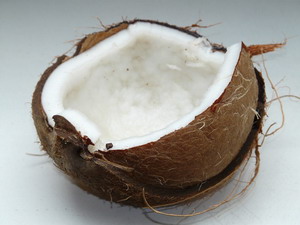 What else reduces hunger? Fiber does! Specifically, we want the types of fiber that our gut bacteria can break down and form the short-chain fatty acid butyrate. Fibers like inulin, glucomannan, resistant starch, psyllium, flax, pectin, guar gum, and many others. I use all of these regularly to make bread substitutes, tortillas, pancakes, and the like. I have already mentioned the omega-3 oils found in fish, but olive and avocado oils and MCT oil in tiny quantities are good for reducing hunger. I would also recommend green tea and curcumin in abundance as well as the herb berberine, the special sugar allulose, and the probiotic Akkermansia. All of these stimulate the GLP1 pathway to reduce hunger.
What else reduces hunger? Fiber does! Specifically, we want the types of fiber that our gut bacteria can break down and form the short-chain fatty acid butyrate. Fibers like inulin, glucomannan, resistant starch, psyllium, flax, pectin, guar gum, and many others. I use all of these regularly to make bread substitutes, tortillas, pancakes, and the like. I have already mentioned the omega-3 oils found in fish, but olive and avocado oils and MCT oil in tiny quantities are good for reducing hunger. I would also recommend green tea and curcumin in abundance as well as the herb berberine, the special sugar allulose, and the probiotic Akkermansia. All of these stimulate the GLP1 pathway to reduce hunger.
 Next, let’s look at ways to increase our metabolism. Most of the energy used in our body is for stuff we have no conscious control over. The biggest users of energy are our brain and liver. Only about 22% of the energy used in our body is for our muscles. But that is what we can work with a bit. I say a bit because if you work out your absolute hardest for one hour you will only burn 341 calories. Since you can only do that level of intensity 2 – 3 times a week without hurting yourself, that means that intense workouts can enable you to lose about one pound of fat a month. That is not a lot. One pound of fat is 3500 calories so it takes 10 to 11 intense 1 hour workouts over a month to burn that many calories. Plus, intense workouts trigger release of the stress hormone cortisol, which makes you fat. With this knowledge, it looks like intense exercise is not a useful way to lose weight, and many studies confirm this. However, there is more going on with exercise than just the burning of calories. Muscles burn calories even at rest, and building more muscle can mean burning more calories every hour of every day. We are only talking about 6 kcal (calories) per pound of muscle per day. We can’t build more liver or more brain, but we can build more muscle. Plus, while we exercise our muscles send messages (through exosomes) to our fat cells telling them to grow more mitochondria so they can burn calories to keep us warm. This raises our metabolic rate.
Next, let’s look at ways to increase our metabolism. Most of the energy used in our body is for stuff we have no conscious control over. The biggest users of energy are our brain and liver. Only about 22% of the energy used in our body is for our muscles. But that is what we can work with a bit. I say a bit because if you work out your absolute hardest for one hour you will only burn 341 calories. Since you can only do that level of intensity 2 – 3 times a week without hurting yourself, that means that intense workouts can enable you to lose about one pound of fat a month. That is not a lot. One pound of fat is 3500 calories so it takes 10 to 11 intense 1 hour workouts over a month to burn that many calories. Plus, intense workouts trigger release of the stress hormone cortisol, which makes you fat. With this knowledge, it looks like intense exercise is not a useful way to lose weight, and many studies confirm this. However, there is more going on with exercise than just the burning of calories. Muscles burn calories even at rest, and building more muscle can mean burning more calories every hour of every day. We are only talking about 6 kcal (calories) per pound of muscle per day. We can’t build more liver or more brain, but we can build more muscle. Plus, while we exercise our muscles send messages (through exosomes) to our fat cells telling them to grow more mitochondria so they can burn calories to keep us warm. This raises our metabolic rate.
 Now I have opened the metabolic rate can of worms. This is a huge subject, so I will just toss out a few teaser lines. Our metabolism is largely a hormonal issue and neurological issue. The things that love to make us fat are estrogen, serotonin, and the stress hormone cortisol. Useful items that fight this are progesterone, pregnenolone, GABA agonists, L-theanine, and magnesium. One of the theories as to why obesity is so high these days is because of the massive exposure we are getting to plastics that mimic estrogen. (Here is a newsletter on this.) The other big hormonal issue is low thyroid hormone slowing down our metabolic rate. (Check out this newsletter) You can check this by measuring your body temperature 40 minutes after your breakfast and then rechecking later in the day. It should increase up to 98.6 degrees. If it is low, there are several blood tests to find out what is going on.
Now I have opened the metabolic rate can of worms. This is a huge subject, so I will just toss out a few teaser lines. Our metabolism is largely a hormonal issue and neurological issue. The things that love to make us fat are estrogen, serotonin, and the stress hormone cortisol. Useful items that fight this are progesterone, pregnenolone, GABA agonists, L-theanine, and magnesium. One of the theories as to why obesity is so high these days is because of the massive exposure we are getting to plastics that mimic estrogen. (Here is a newsletter on this.) The other big hormonal issue is low thyroid hormone slowing down our metabolic rate. (Check out this newsletter) You can check this by measuring your body temperature 40 minutes after your breakfast and then rechecking later in the day. It should increase up to 98.6 degrees. If it is low, there are several blood tests to find out what is going on.
Enough of the deep dive into the underlying issues behind obesity that need to be addressed to be successful with a weight loss New Year’s resolution. What do we eat?
- Protein – three 25-gram servings per day – fish, lean meat, protein powder
- Fiber–soluble fibers added to drinks or soups, zero-carb noodles
- Veggies – low carbohydrate veggies – cruciferous, leafy greens
- Fruit – low carbohydrate fruit – berries
- Flavorings – fruit vinegars, coconut aminos, spices, allulose, stevia, monk fruit
- Tea – green or black, raw cacao, coffee
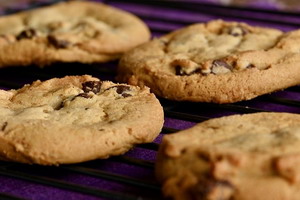 What is missing from this list are fats and carbohydrates. These are the foods that provide us with external energy. If we want to burn our stored energy, we need to stop dumping energy-providing foods from outside our bodies. It is almost impossible to avoid all fats and carbs, but we do the best we can. In cooking, we may use a teaspoon or two of olive or avocado oil. When eating veggies, there will be some amount of carbs present. This is a very low-calorie program, but we want to fight hunger with lots of protein and fiber. We then ramp up the science and add in green tea, curcumin, and allulose, plus the hormone supports that I mentioned earlier. I would also rotate this protocol to prevent the low calories from slowing down your metabolism- 1 week on then 1 week off – being careful to avoid excess re-feeding on the off weeks. Eat healthy carbs like fruit and sweet potatoes in the week off, but continue to avoid fats until you have lost all the weight you want. Let me know how this works for you. It has a lot more scientific support than what is usually tried.Take care,
What is missing from this list are fats and carbohydrates. These are the foods that provide us with external energy. If we want to burn our stored energy, we need to stop dumping energy-providing foods from outside our bodies. It is almost impossible to avoid all fats and carbs, but we do the best we can. In cooking, we may use a teaspoon or two of olive or avocado oil. When eating veggies, there will be some amount of carbs present. This is a very low-calorie program, but we want to fight hunger with lots of protein and fiber. We then ramp up the science and add in green tea, curcumin, and allulose, plus the hormone supports that I mentioned earlier. I would also rotate this protocol to prevent the low calories from slowing down your metabolism- 1 week on then 1 week off – being careful to avoid excess re-feeding on the off weeks. Eat healthy carbs like fruit and sweet potatoes in the week off, but continue to avoid fats until you have lost all the weight you want. Let me know how this works for you. It has a lot more scientific support than what is usually tried.Take care,
David
Ellen
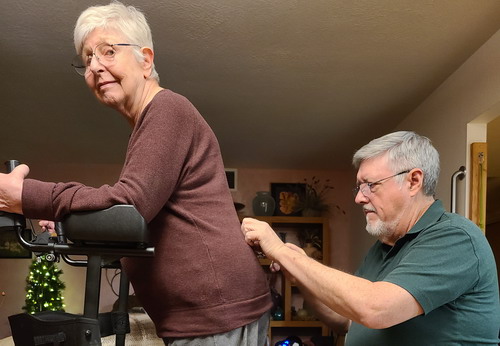 Ellen Ellen was feeling like she had some trouble in her left hip. She was afraid that the screws holding the previously broken hip together were coming loose. But when she pinpointed where the pain was it turned out to be her sacroiliac joint. I treat these every day so we had her stand up with her rolling walker and I sat behind here and adjusted the sacrum and low back. This relieved the pain and life continues.
Ellen Ellen was feeling like she had some trouble in her left hip. She was afraid that the screws holding the previously broken hip together were coming loose. But when she pinpointed where the pain was it turned out to be her sacroiliac joint. I treat these every day so we had her stand up with her rolling walker and I sat behind here and adjusted the sacrum and low back. This relieved the pain and life continues.
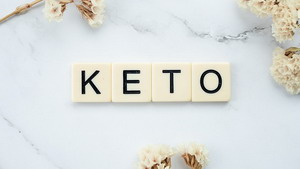 Keto diet reduces epilepsy
Keto diet reduces epilepsy
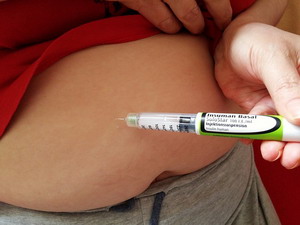 New slow release insulin developed
New slow release insulin developed
 Belief determines drug effectiveness
Belief determines drug effectiveness
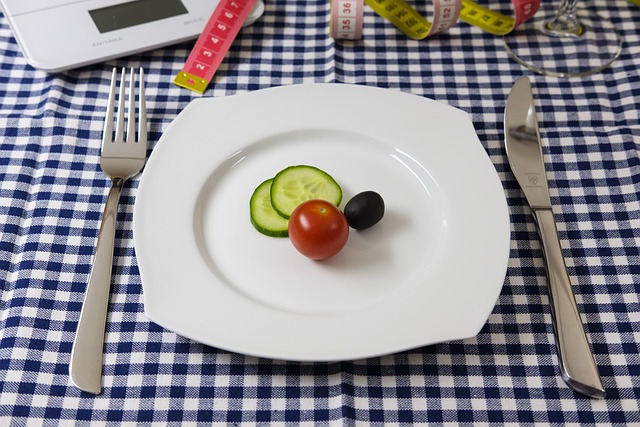
 Last week I wrote about the hormone GLP1 because of its role in reducing hunger and controlling blood sugar. Both of these are vital to carrying out an effective weight loss plan for the new year. So here we are with one foot planted in 2024 ready to take off in this new year. Since weight loss is the most common resolution at New Year’s, I felt that a little more info on the modern basics of weight loss would be well suited for the first newsletter of the year.
Last week I wrote about the hormone GLP1 because of its role in reducing hunger and controlling blood sugar. Both of these are vital to carrying out an effective weight loss plan for the new year. So here we are with one foot planted in 2024 ready to take off in this new year. Since weight loss is the most common resolution at New Year’s, I felt that a little more info on the modern basics of weight loss would be well suited for the first newsletter of the year. One of the popular sound bites that has been running around for the last few years is that calories don’t count. The old paradigm of simply eating fewer calories than you burn is all you need to know to lose weight has been found far too simplistic. There is a whole world of things that affect our metabolic rate; the rate of calorie burn that determines how many calories we use up each day. One big observation is that if you significantly lower your caloric intake, your metabolic rate will decrease to compensate. While this is true to the tune of about 10%, it will not slow down much more than that. That said, if you don’t eat fewer calories than you burn, you will not lose weight. I have spent years on a keto diet using time-restricted feeding and avoidance of allergens and lectins and not lost an ounce simply because I was still eating too many calories. Healthy calories are still calories, and they still count.
One of the popular sound bites that has been running around for the last few years is that calories don’t count. The old paradigm of simply eating fewer calories than you burn is all you need to know to lose weight has been found far too simplistic. There is a whole world of things that affect our metabolic rate; the rate of calorie burn that determines how many calories we use up each day. One big observation is that if you significantly lower your caloric intake, your metabolic rate will decrease to compensate. While this is true to the tune of about 10%, it will not slow down much more than that. That said, if you don’t eat fewer calories than you burn, you will not lose weight. I have spent years on a keto diet using time-restricted feeding and avoidance of allergens and lectins and not lost an ounce simply because I was still eating too many calories. Healthy calories are still calories, and they still count. When we diet, we are trying to lose the excess fat we have stored in fat cells. Right off the bat, we have a problem. Most cells in the body do not burn fat if there is any sugar (glucose) around. They will always burn the glucose first. To even think about burning unwanted fat, we have to use up glucose from the bloodstream. That means two things, eliminating or restricting sugars and starches in the diet and eliminating insulin resistance in the cells that is keeping blood sugar levels high. The cells have to be starved for energy before they will burn fats for energy. (This is not true for heart cells.) What does that mean on a practical level? It means that you are not going to lose weight by eating pasta and drinking fruit smoothies. Both of those become sugar in your gut. If you are going to eat any carbs at all, they need to be complex hard-to-digest carbs like non-starchy veggies and low-carb fruit, like berries. Grains are definitely off the list for any sustained weight loss where you are trying to lose 20 lbs or more.
When we diet, we are trying to lose the excess fat we have stored in fat cells. Right off the bat, we have a problem. Most cells in the body do not burn fat if there is any sugar (glucose) around. They will always burn the glucose first. To even think about burning unwanted fat, we have to use up glucose from the bloodstream. That means two things, eliminating or restricting sugars and starches in the diet and eliminating insulin resistance in the cells that is keeping blood sugar levels high. The cells have to be starved for energy before they will burn fats for energy. (This is not true for heart cells.) What does that mean on a practical level? It means that you are not going to lose weight by eating pasta and drinking fruit smoothies. Both of those become sugar in your gut. If you are going to eat any carbs at all, they need to be complex hard-to-digest carbs like non-starchy veggies and low-carb fruit, like berries. Grains are definitely off the list for any sustained weight loss where you are trying to lose 20 lbs or more. The modern approach is to combine low-calorie consumption with methods for raising our metabolic rate. Since low-calorie is still the ugly beast we have to confront while dieting, we need to find a way to diminish our hunger. This was the point of the last article on GLP1. Among other things, GLP1 reduces hunger. So let’s incorporate things into our diet that stimulate this hormone. First on this list is to make sure that at least 30% of our calories consumed are lean protein. We are talking about at least 75 grams a day of lean protein – 25 grams per meal. The challenge is that most sources of protein come with fat in them, which we don’t want much of as we are trying to burn our fat; not the fats we have eaten. Some fat in the form of omega-3 oils is okay since we don’t store these in our bodies, so fish is a good option. Curiously ham and chicken breast will often be only 2% fat, as will low-fat cottage cheese. Unfortunately, most other dairy products will have far too much fat to work on a weight loss diet. A little is needed to get the 15 and 17-carbon saturated fats that we need, but not much. Vegetarian protein options all tend to either have lots of carbs or lots of fat. Tofu and tempeh both have 1 gram of fat for each 2 grams of protein. So unless you depend on protein powders, you will be getting around 300 calories of unhealthy fats to meet your daily protein needs. The alternative vegan protein is beans, which on average have three times as much carbohydrate as protein. To get enough protein you would need 5 to 6 cups of legumes a day.
The modern approach is to combine low-calorie consumption with methods for raising our metabolic rate. Since low-calorie is still the ugly beast we have to confront while dieting, we need to find a way to diminish our hunger. This was the point of the last article on GLP1. Among other things, GLP1 reduces hunger. So let’s incorporate things into our diet that stimulate this hormone. First on this list is to make sure that at least 30% of our calories consumed are lean protein. We are talking about at least 75 grams a day of lean protein – 25 grams per meal. The challenge is that most sources of protein come with fat in them, which we don’t want much of as we are trying to burn our fat; not the fats we have eaten. Some fat in the form of omega-3 oils is okay since we don’t store these in our bodies, so fish is a good option. Curiously ham and chicken breast will often be only 2% fat, as will low-fat cottage cheese. Unfortunately, most other dairy products will have far too much fat to work on a weight loss diet. A little is needed to get the 15 and 17-carbon saturated fats that we need, but not much. Vegetarian protein options all tend to either have lots of carbs or lots of fat. Tofu and tempeh both have 1 gram of fat for each 2 grams of protein. So unless you depend on protein powders, you will be getting around 300 calories of unhealthy fats to meet your daily protein needs. The alternative vegan protein is beans, which on average have three times as much carbohydrate as protein. To get enough protein you would need 5 to 6 cups of legumes a day. What else reduces hunger? Fiber does! Specifically, we want the types of fiber that our gut bacteria can break down and form the short-chain fatty acid butyrate. Fibers like inulin, glucomannan, resistant starch, psyllium, flax, pectin, guar gum, and many others. I use all of these regularly to make bread substitutes, tortillas, pancakes, and the like. I have already mentioned the omega-3 oils found in fish, but olive and avocado oils and MCT oil in tiny quantities are good for reducing hunger. I would also recommend green tea and curcumin in abundance as well as the herb berberine, the special sugar allulose, and the probiotic Akkermansia. All of these stimulate the GLP1 pathway to reduce hunger.
What else reduces hunger? Fiber does! Specifically, we want the types of fiber that our gut bacteria can break down and form the short-chain fatty acid butyrate. Fibers like inulin, glucomannan, resistant starch, psyllium, flax, pectin, guar gum, and many others. I use all of these regularly to make bread substitutes, tortillas, pancakes, and the like. I have already mentioned the omega-3 oils found in fish, but olive and avocado oils and MCT oil in tiny quantities are good for reducing hunger. I would also recommend green tea and curcumin in abundance as well as the herb berberine, the special sugar allulose, and the probiotic Akkermansia. All of these stimulate the GLP1 pathway to reduce hunger. Next, let’s look at ways to increase our metabolism. Most of the energy used in our body is for stuff we have no conscious control over. The biggest users of energy are our brain and liver. Only about 22% of the energy used in our body is for our muscles. But that is what we can work with a bit. I say a bit because if you work out your absolute hardest for one hour you will only burn 341 calories. Since you can only do that level of intensity 2 – 3 times a week without hurting yourself, that means that intense workouts can enable you to lose about one pound of fat a month. That is not a lot. One pound of fat is 3500 calories so it takes 10 to 11 intense 1 hour workouts over a month to burn that many calories. Plus, intense workouts trigger release of the stress hormone cortisol, which makes you fat. With this knowledge, it looks like intense exercise is not a useful way to lose weight, and many studies confirm this. However, there is more going on with exercise than just the burning of calories. Muscles burn calories even at rest, and building more muscle can mean burning more calories every hour of every day. We are only talking about 6 kcal (calories) per pound of muscle per day. We can’t build more liver or more brain, but we can build more muscle. Plus, while we exercise our muscles send messages (through exosomes) to our fat cells telling them to grow more mitochondria so they can burn calories to keep us warm. This raises our metabolic rate.
Next, let’s look at ways to increase our metabolism. Most of the energy used in our body is for stuff we have no conscious control over. The biggest users of energy are our brain and liver. Only about 22% of the energy used in our body is for our muscles. But that is what we can work with a bit. I say a bit because if you work out your absolute hardest for one hour you will only burn 341 calories. Since you can only do that level of intensity 2 – 3 times a week without hurting yourself, that means that intense workouts can enable you to lose about one pound of fat a month. That is not a lot. One pound of fat is 3500 calories so it takes 10 to 11 intense 1 hour workouts over a month to burn that many calories. Plus, intense workouts trigger release of the stress hormone cortisol, which makes you fat. With this knowledge, it looks like intense exercise is not a useful way to lose weight, and many studies confirm this. However, there is more going on with exercise than just the burning of calories. Muscles burn calories even at rest, and building more muscle can mean burning more calories every hour of every day. We are only talking about 6 kcal (calories) per pound of muscle per day. We can’t build more liver or more brain, but we can build more muscle. Plus, while we exercise our muscles send messages (through exosomes) to our fat cells telling them to grow more mitochondria so they can burn calories to keep us warm. This raises our metabolic rate. Now I have opened the metabolic rate can of worms. This is a huge subject, so I will just toss out a few teaser lines. Our metabolism is largely a hormonal issue and neurological issue. The things that love to make us fat are estrogen, serotonin, and the stress hormone cortisol. Useful items that fight this are progesterone, pregnenolone, GABA agonists, L-theanine, and magnesium. One of the theories as to why obesity is so high these days is because of the massive exposure we are getting to plastics that mimic estrogen.
Now I have opened the metabolic rate can of worms. This is a huge subject, so I will just toss out a few teaser lines. Our metabolism is largely a hormonal issue and neurological issue. The things that love to make us fat are estrogen, serotonin, and the stress hormone cortisol. Useful items that fight this are progesterone, pregnenolone, GABA agonists, L-theanine, and magnesium. One of the theories as to why obesity is so high these days is because of the massive exposure we are getting to plastics that mimic estrogen.  What is missing from this list are fats and carbohydrates. These are the foods that provide us with external energy. If we want to burn our stored energy, we need to stop dumping energy-providing foods from outside our bodies. It is almost impossible to avoid all fats and carbs, but we do the best we can. In cooking, we may use a teaspoon or two of olive or avocado oil. When eating veggies, there will be some amount of carbs present. This is a very low-calorie program, but we want to fight hunger with lots of protein and fiber. We then ramp up the science and add in green tea, curcumin, and allulose, plus the hormone supports that I mentioned earlier. I would also rotate this protocol to prevent the low calories from slowing down your metabolism- 1 week on then 1 week off – being careful to avoid excess re-feeding on the off weeks. Eat healthy carbs like fruit and sweet potatoes in the week off, but continue to avoid fats until you have lost all the weight you want. Let me know how this works for you. It has a lot more scientific support than what is usually tried.Take care,
What is missing from this list are fats and carbohydrates. These are the foods that provide us with external energy. If we want to burn our stored energy, we need to stop dumping energy-providing foods from outside our bodies. It is almost impossible to avoid all fats and carbs, but we do the best we can. In cooking, we may use a teaspoon or two of olive or avocado oil. When eating veggies, there will be some amount of carbs present. This is a very low-calorie program, but we want to fight hunger with lots of protein and fiber. We then ramp up the science and add in green tea, curcumin, and allulose, plus the hormone supports that I mentioned earlier. I would also rotate this protocol to prevent the low calories from slowing down your metabolism- 1 week on then 1 week off – being careful to avoid excess re-feeding on the off weeks. Eat healthy carbs like fruit and sweet potatoes in the week off, but continue to avoid fats until you have lost all the weight you want. Let me know how this works for you. It has a lot more scientific support than what is usually tried.Take care, Ellen Ellen was feeling like she had some trouble in her left hip. She was afraid that the screws holding the previously broken hip together were coming loose. But when she pinpointed where the pain was it turned out to be her sacroiliac joint. I treat these every day so we had her stand up with her rolling walker and I sat behind here and adjusted the sacrum and low back. This relieved the pain and life continues.
Ellen Ellen was feeling like she had some trouble in her left hip. She was afraid that the screws holding the previously broken hip together were coming loose. But when she pinpointed where the pain was it turned out to be her sacroiliac joint. I treat these every day so we had her stand up with her rolling walker and I sat behind here and adjusted the sacrum and low back. This relieved the pain and life continues.